Chapter: Mechanical : Strength of Materials : Transverse Loading On Beams And Stresses In Beam
Materials for Beam
Materials
for Beam:
The beams may be made from several
usable engineering materials such commonly among them are as follows:
Metal
Wood
Concrete
Plastic
Issues
Regarding Beam:
Designer would be interested to know the
answers to following issues while dealing with beams in practical engineering
application
•
At
whatail load will it f
•
How
much deflection occurs
under th
Cantilever
Beam: A beam which is supported on the fixed support is
termed as a cantilever beam: Now let us understand the meaning of a
fixed support. Such a support is obtained by building a beam into a brick wall,
casting it into concrete or welding the end of the beam. Such a support
provides both the translational and rotational constrainment to the beam,
therefore the reaction as well as the moments appears, as shown in the figure
below
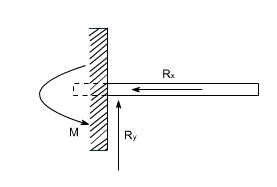
Simply Supported Beam: The
beams are said to be simply supported if their supports creates only the
translational constraints.
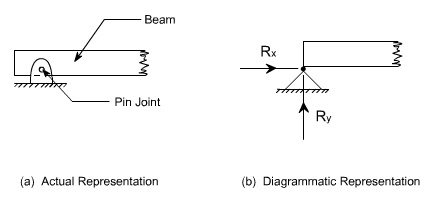
Some times the translational movement
may be allowed in one direction with the help of rollers and can be represented
like this
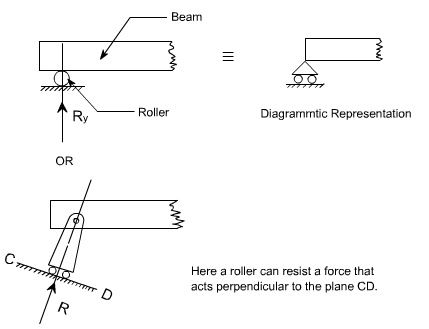
Statically
Determinate or Statically Indeterminate Beams:
The beams can also be categorized as
statically determinate or else it can be referred as statically indeterminate.
If all the external forces and moments acting on it can be determined from the
equilibrium conditions alone then. It would be referred as a statically
determinate beam, whereas in the statically indeterminate beams one has to
consider deformation i.e. deflections to solve the problem.
Types
of loads acting on beams:
A beam is normally horizontal where as
the external loads acting on the beams is generally in the vertical directions.
In order to study the behaviors of beams under flexural loads. It becomes pertinent
that one must be familiar with the various types of loads acting on the beams
as well as their physical manifestations.
A. Concentrated
Load: It is a kind of load which is considered to act at a
point. By this we mean that the length of beam over which the force acts
is so small in comparison to its total length that one can model the force as
though applied at a point in two dimensional view of beam. Here in this case,
force or load may be made to act on a beam by a hanger or though other means
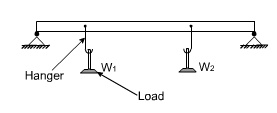
B. Distributed
Load: The distributed load is a kind of load which is made
to spread over a entire span of beam or over a particular portion of the
beam in some specific manner
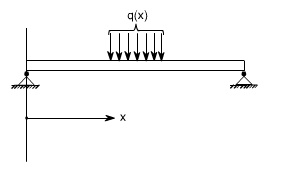
In the above figure, the rate of load is
a non uniformly distributed load.
The rate of
theloadinglengthofthebeam„q'maybe overuniformover the entire span of beam, then
we cell this as a uniformly distributed load (U.D.L). The U.D.L may be
represented in either of the way on the beams
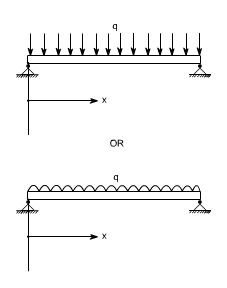
some times the load acting on the beams
may be the uniformly varying as in the case of dams or on inclind wall of a
vessel containing liquid, then this may be represented on the beam as below:
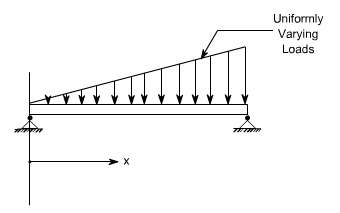
The U.D.L can be easily realized by
making idealization of the ware house load, where the ![]() bags of grains are placed over a
beam.
bags of grains are placed over a
beam.

Concentrated Moment:
The beam may be subjected to a concentrated moment essentially at a point. One of the possible arrangement for applying the moment is being shown in the figure below:
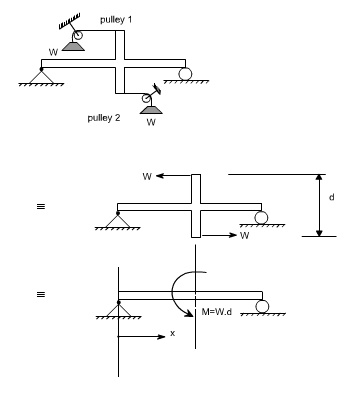
Related Topics